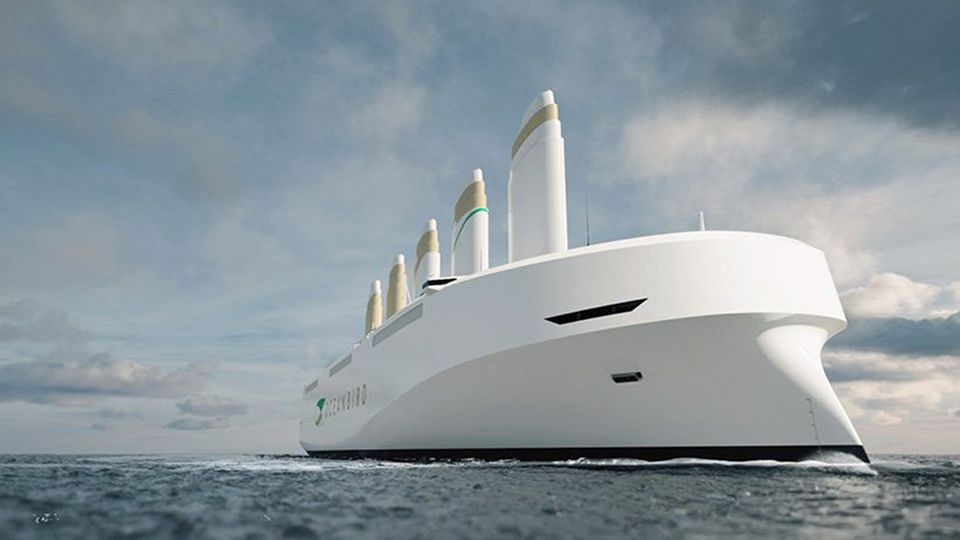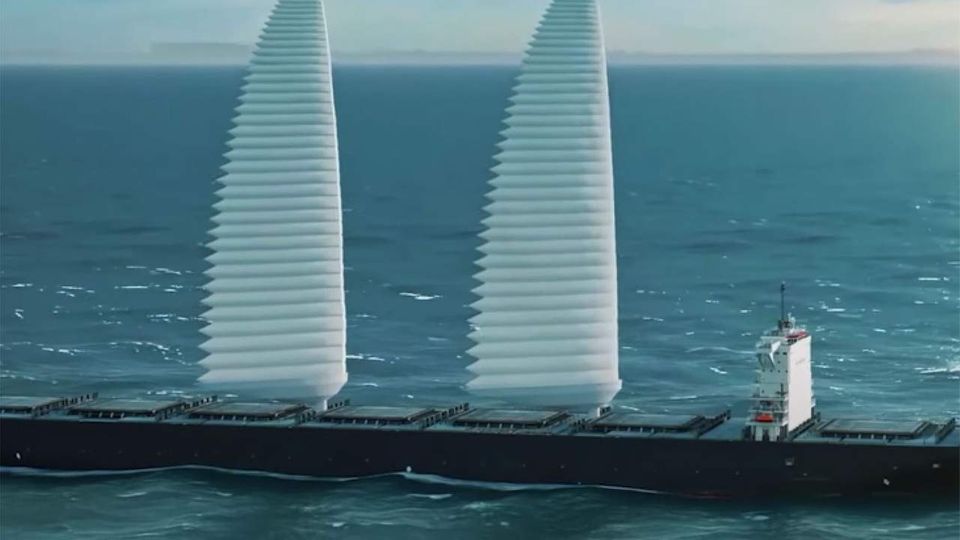Container Ship
Clean seafaring even without sails – the “Laura Maersk” runs on green ethanol
With ships like the “Laura Maersk”, the major shipping companies want to become climate-neutral in the long term.
©PR
CO2-neutral shipping is also possible without windjammer romance. The container ship “Laura Maersk” refuels with methanol instead of heavy oil. In the long run, the alcohol is to be produced from renewable electricity.
The first idea has a special, romantic charm. Here the return of the sailing ships is promised. Examples are the “Pyxis Ocean”, which is currently making its first voyage and generates about 30 percent of its propulsion energy from the wind. Or the “Oceanbird” – although this ship is still under construction. She even wants to move mainly with the power of the wind. The advantage of the concept: The natural energy is taken from where it is needed.
Just change the fuel
The second way to climate-neutral seafaring is a little more prosaic and has to do without the romanticism of sailing. Biofuel is simply used instead of heavy oil. Such a ship is currently on its way from Singapore to Denmark, where it will be named “Laura Maersk”. The blue, 172 meter long ship can be powered by green methanol – an alcohol – or by conventional fuels.
The Danish shipping giant Maersk seems convinced of the idea that the “Laura Maersk” is the first of 25 ships that the shipping company has ordered. “Laura Maersk” was commissioned at South Korea’s Hyundai Mipo Dockyard in July 2021. It can transport 2100 standard containers, of which 400 can be refrigerated containers. It is powered by a MAN dual-fuel engine and has a top speed of 17.4 knots.
Where do you get the methanol from?
All methanol was made from methane recovered from landfills or from other biological sources such as manure. This “biomethanol” reduces CO2 emissions by 65 percent. “This is a strong signal for global marine fuel markets that demand for green methanol is growing rapidly,” said Maersk’s Mikkel Elbek Linnet. Not only Maersk, but also other shipping companies had ordered such ships. There are more than 100 ships in total, while the new construction of freight sailing ships can be counted on one hand. The advantage of this route is that apart from the fuel, nothing has to change. The ships do not have to adjust speeds or routes for the wind and they do not need dual propulsion on board, like the sailors, who use a full-fledged engine in addition to the sails.
The only question is where does the green methanol come from if it is not made from fossil natural gas. It will never be possible to produce the necessary quantities from “superfluous” biomass such as liquid manure or waste. Especially since there are other interested parties for liquid manure methanol that are closer to the production. The agricultural production of biomass solely to make fuel from it is rightly controversial.
High conversion losses
The way out is e-methanol. Hydrogen is first produced from renewable energy and then e-methanol is produced from it. Maersk plans to power the ship with CO2-neutral e-methanol, which will be produced at a facility in southern Denmark. Because of the conversion losses, this process is also controversial, critics assume that e-methanol will never be produced at fair market prices.
Currently, it is a calculation with several variables that are difficult to determine on their own. What is certain is that regenerative energy, whether from wind, solar or wave power, can be produced very cheaply at good locations. On the other hand, questions related to the transport and storage of electricity have not been resolved. With rechargeable batteries it will not be possible to store the solar energy of the summer for the dark winter.
However, electricity in Europe is already being supplied free of charge or at a negative price at times of peak production, because this electricity cannot be used at that moment. So it is conceivable to also accept greater conversion losses in order to convert this electricity into a “perishable” form, whether it is methanol, ammonia or hydrogen. The “Laura Maersk” was already built in such a way that the propulsion system can also be converted to another environmentally friendly fuel.
Maersk was accused of being “impatient”, but it is to be commended that the shipping company is moving forward and not waiting to see which technology ultimately turns out to be the most efficient. Because that cannot be found out with forecasts and laboratory tests, but only in practice. And it has now started with e-methanol. Just as there are already the first ships with hydrogen propulsion.





